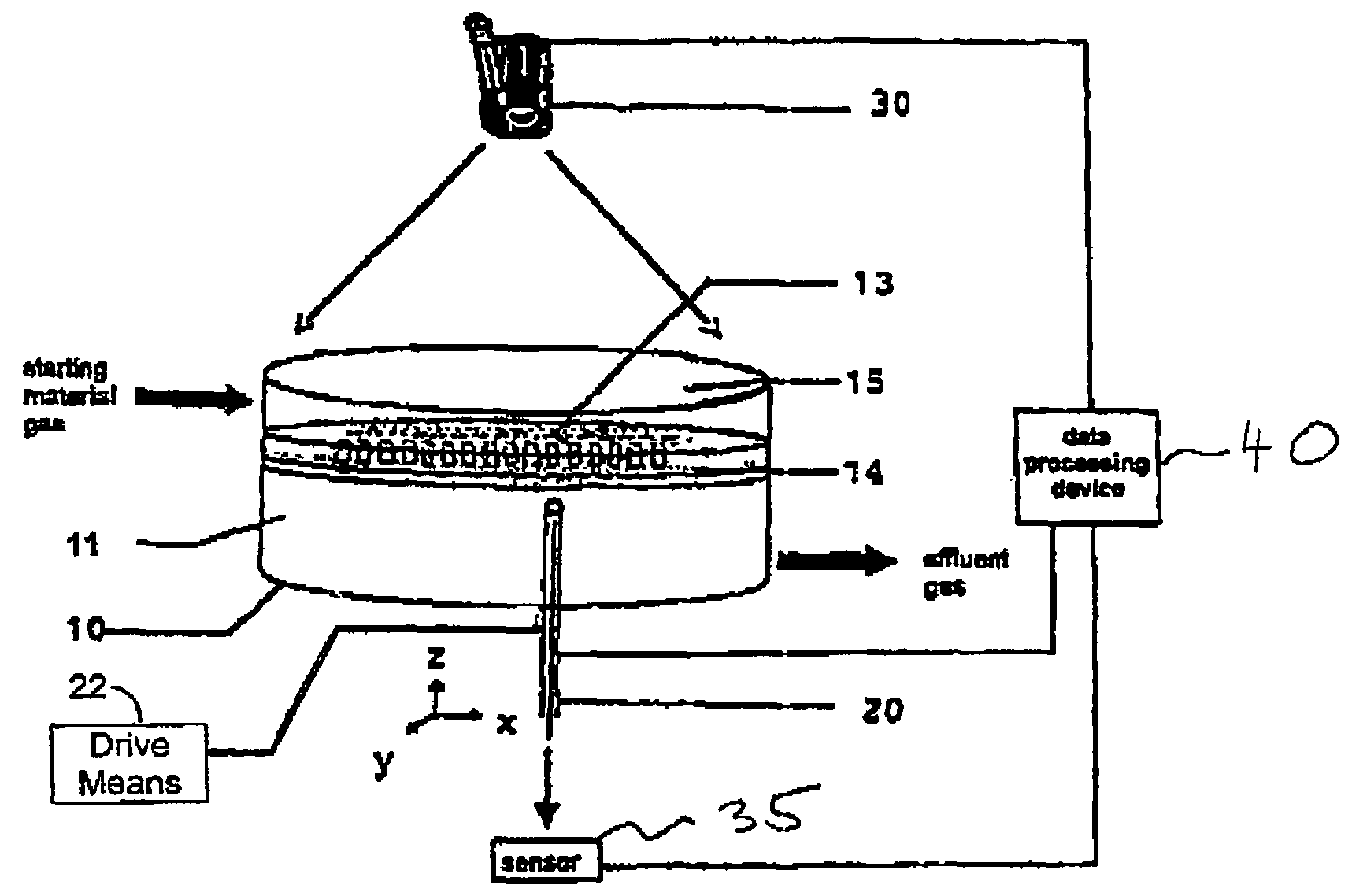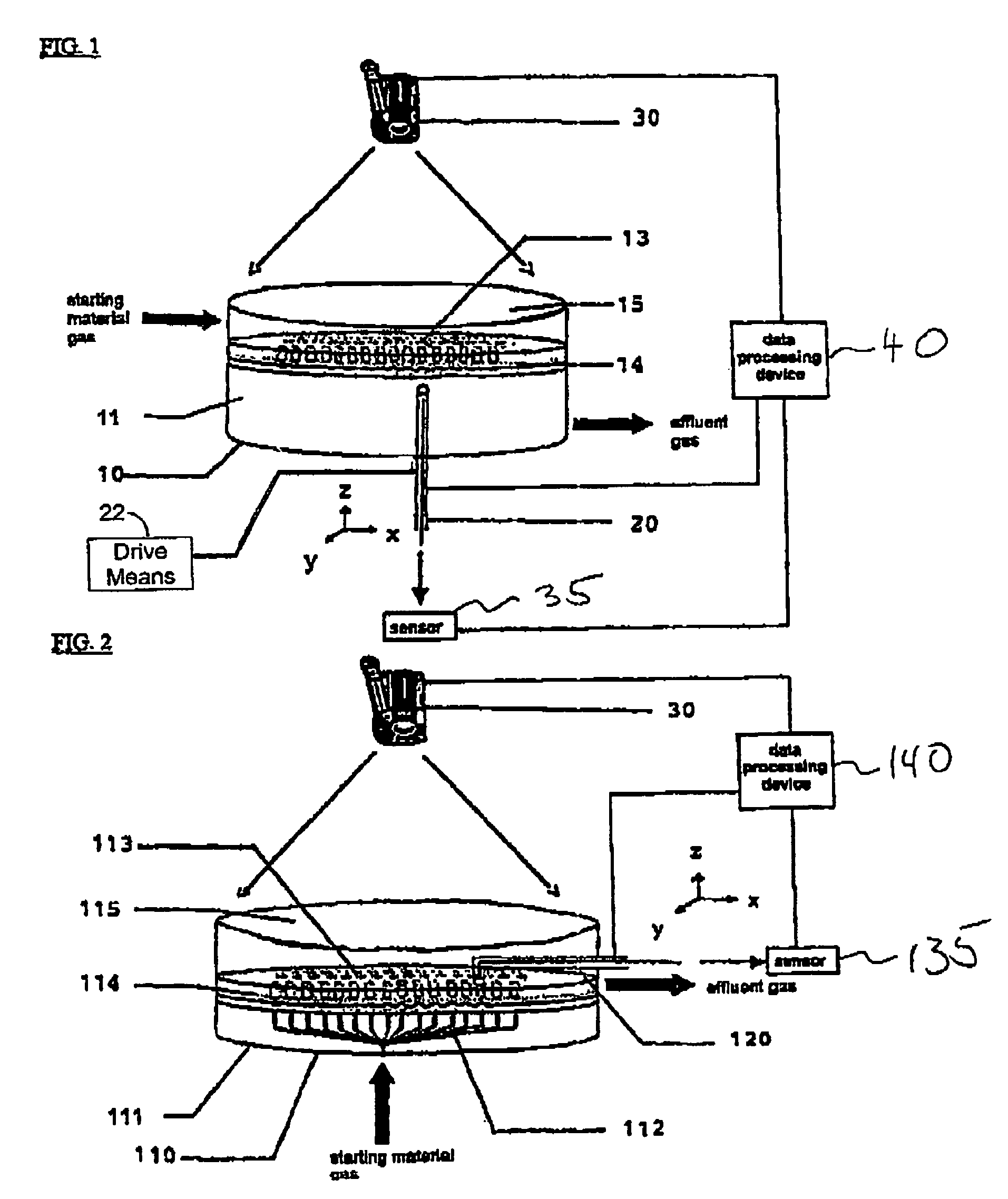Process and apparatus for the combinatorial production and testing of catalyst material libraries by using at least two analytical methods
a technology of catalyst material and combinatorial production, applied in the direction of library member identification, optical radiation measurement, particle separator tube, etc., can solve the problems of reducing the efficiency of catalyst material production, and reducing the difficulty of sample handling from the outside, so as to achieve simple and rapid
- Summary
- Abstract
- Description
- Claims
- Application Information
AI Technical Summary
Benefits of technology
Problems solved by technology
Method used
Image
Examples
Embodiment Construction
[0020]The present invention provides a process and an apparatus for determining useful properties of individual building blocks of a material library which do not have the disadvantages of the methods previously used in the analysis of such material libraries and, in addition, provide in a simple and rapid manner information on useful properties, preferably catalytic properties, in this case in particular activity and selectivity, of building blocks of a material library.
[0021]For purposes of the description, the following definitions are provided.
[0022]The term “material library” used in the context of the present invention describes here an arrangement of at least two, preferably up to 10, further preferably up to 100, in particular up to 1000 and further preferably up to 100,000, building blocks which are situated in at least two different substrate sections which are separated from one another.
[0023]The term “building block” describes a single defined unit which is situated in t...
PUM
| Property | Measurement | Unit |
|---|---|---|
| diameter | aaaaa | aaaaa |
| temperatures | aaaaa | aaaaa |
| temperature | aaaaa | aaaaa |
Abstract
Description
Claims
Application Information
 Login to View More
Login to View More - Generate Ideas
- Intellectual Property
- Life Sciences
- Materials
- Tech Scout
- Unparalleled Data Quality
- Higher Quality Content
- 60% Fewer Hallucinations
Browse by: Latest US Patents, China's latest patents, Technical Efficacy Thesaurus, Application Domain, Technology Topic, Popular Technical Reports.
© 2025 PatSnap. All rights reserved.Legal|Privacy policy|Modern Slavery Act Transparency Statement|Sitemap|About US| Contact US: help@patsnap.com


